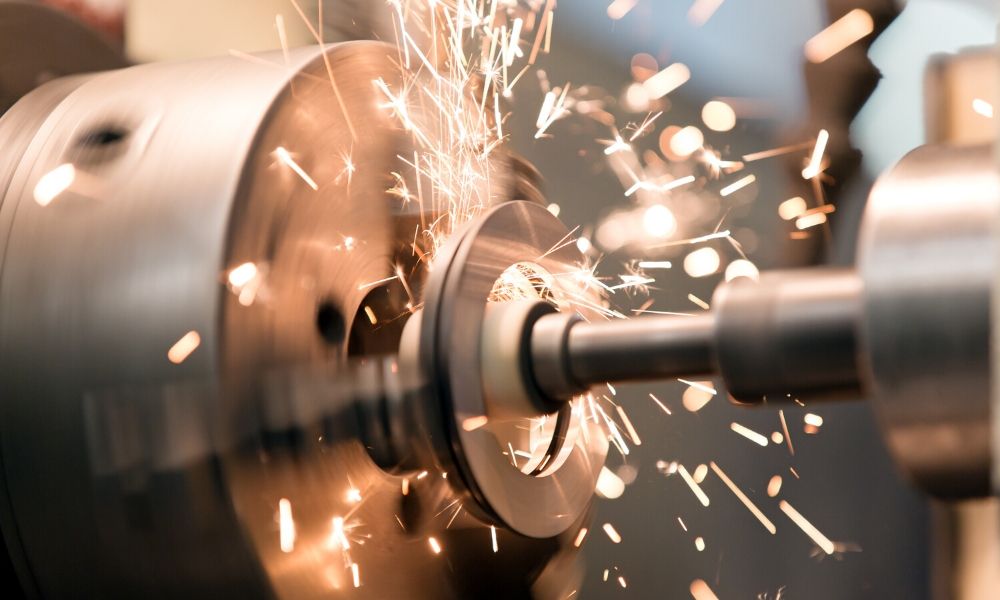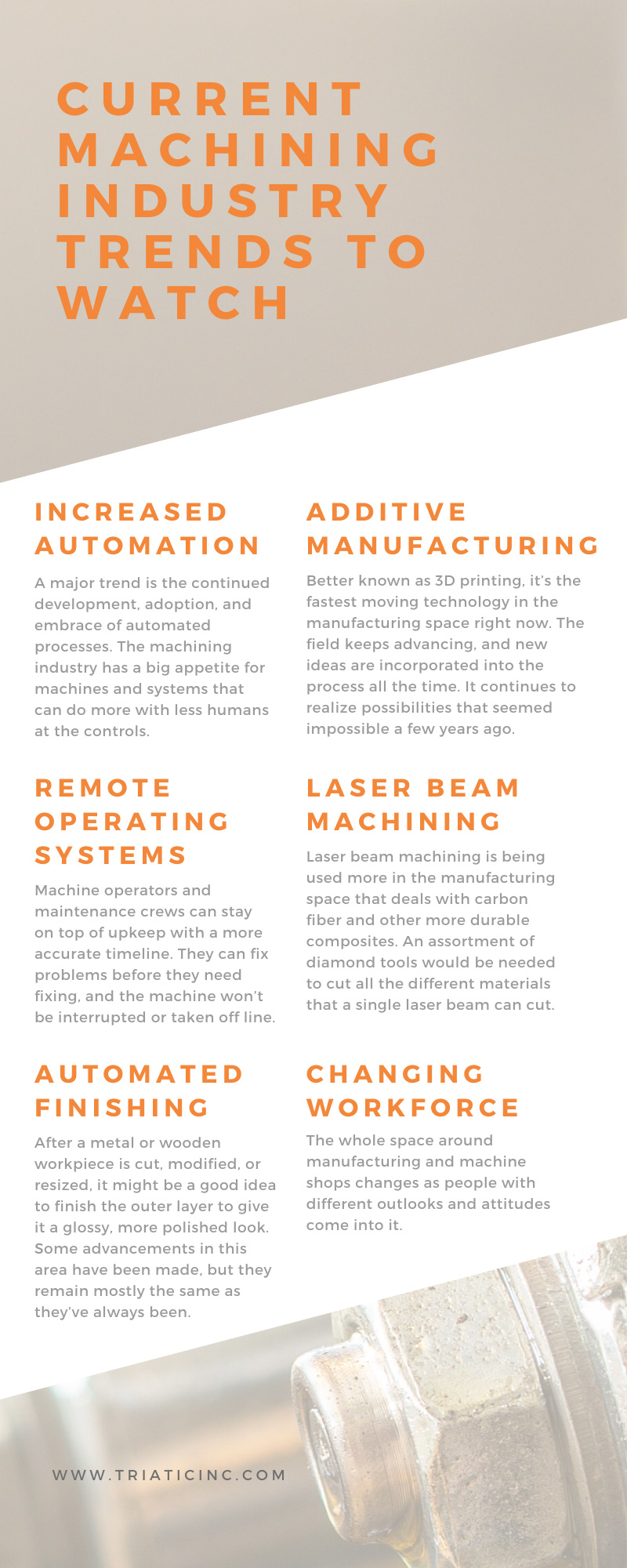Current Machining Industry Trends to Watch
24th Oct 2023

Technology advances at such a fast rate that it’s almost disruptive. A new piece of technology will arrive, and before anyone can learn it and truly understand it, there’s something newer trying to push it out of the way. Machine learning, artificial intelligence (AI), and Internet of things (IoT) are all new technologies that present new opportunities, but they also alter the way manufacturers conduct their traditional operations. That’s also the case in the machining world. For decades, the traditional methods of machining were preferred and dependable, but that’s changing. New processes promise various benefits such as improved efficiency, lower operating costs, eco-friendly solutions, and higher precision.
To get an idea of where all this new technology will take the machining field, it’s good to examine some of the newer trends. We explore some of the current machining industry trends for you to watch.
Increased Automation
A major trend is the continued development, adoption, and embrace of automated processes. Utilizing an assortment of diamond tools and CBN wheels and tools, the machining industry has a big appetite for machines and systems that can do more with less humans at the controls. We tend to think of mindless robots doing one task over and over, and that’s partially correct. This new automation gives rise to increasingly sophisticated and effective machines that can perform a series of operations and/or add a large amount of value in a single handling of a part. Data driven manufacturing is the other form of automation that is changing the game. This system level automation senses and identifies process changes, and it can make appropriate responses to those changes that used to require human intervention. More and more manufacturers want to master this automation and create lights out operations within their shop. They developed process that can function at night while there are no employees present. Those companies have found a new kind of outsourcing within their own building.
Additive Manufacturing
Additive manufacturing is red hot right now, and it has been for a few years. Better known as 3D printing, it’s the fastest moving technology in the manufacturing space right now. The field keeps advancing, and new ideas are incorporated into the process all the time. It continues to realize possibilities that seemed impossible a few years ago. The biggest development in 3D printing right now is the quantities that it can produce. Advances have made it so that 3D printers can achieve full scale production quantities, rather than just one offs. Additive manufacturing as a means of making parts also allows for part designs that conventional manufacturing processes cannot achieve. It will also transform and simplify supply chain solutions by making it easier to produce necessary parts close to when and where they’re needed.
Remote Operating Systems
The Internet of things, (IoT), incorporates connected smart devices to improve control over various equipment and to deliver more insights into how the machines function. It complements the automated systems, so processes can become fully streamlined and managed in different ways. These connected machines can operate autonomously, and they only needed human intervention when something goes wrong or breaks down. This technology can send the necessary data and alerts well in advance of an actual occurrence. This new ability to predict future issues can occur because of a real-time data stream that continuously flows in that’s analyzed as the machine operates. Machine operators and maintenance crews can stay on top of upkeep with a more accurate timeline. They can fix problems before they need fixing, and the machine won’t be interrupted or taken off line. Addressing problems before they become problems leads to a more efficient operation.
Laser Beam Machining
Still a relatively new method, laser beam machining (laser micromachining) is starting to grow in popularity. It’s a thermal process used for material removal. A high energy laser beam focuses on the workpiece, and that energy transfers to the desired surface. Through vaporization and fusion, the target material is removed to create the desired pattern or part. As the process becomes more popular and affordable, more uses for it will emerge. Laser beam machining is being used more in the manufacturing space that deals with carbon fiber and other more durable composites. Engineers can use the process for welding, etching, surface treatments, cladding, drilling, and cutting. Laser cutting is usable on any material, and it’s popular for cutting glass because it won’t melt or alter the edges and surface.
Automated Finishing
After a metal or wooden workpiece is cut, modified, or resized, it might be a good idea to finish the outer layer to give it a glossy, more polished look. Some advancements in this area have been made, but they remain mostly the same as they’ve always been. Even the new methods employ a highly repeatable, consistent process. Automation jumps into the fray here to make the processes a little bit better. Robotic powered finishing systems took over the chore of finishing parts. Robotic abrasive blasting systems have unmatched improvements in quality, efficiency, versatility, and safety. Like any other automated process, less human interaction is needed to finish the parts.
Changing Workforce
The whole space around manufacturing and machine shops changes as people with different outlooks and attitudes enter into the workforce. These people lead and influence the development of different manufacturing organizations and companies. An entire generation was lost in Generation X. Gen X was discouraged from doing manual labor and manufacturing jobs, and were instead pushed to get office jobs. As a result, manufacturing skipped a generation. As the Baby Boomers continue to retire, it’s the Millennials that replaced them. The knowledge gap between the two is stark. The boomers have a lifetime of experience and knowledge regarding manual processes, and their replacements have more knowledge on emerging technological trends. It’s the advancements in the middle that Gen X would have learned that’s missing. The Millennials, however, have enthusiasm and a drive to learn, so they’re ready to embrace the work without the resistance that Gen X gave. Millennials also have a built-in understanding of technology that Boomers and Gen X do not, so the learning curve won’t be as steep during training. Employers will seize this opportunity to transition from an aging workforce that relies on manual craftsmen working independently to attentive newbies that can work as a collaboration.


